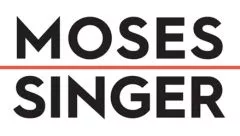The legend "No Claim to Government Works" is familiar to virtually every American law student. For decades, that legend has appeared at the bottom of printouts of cases from Westlaw and other electronic databases of legal opinions. Despite its wide use, this well-known concept was at the center of a complicated, years-long proceeding, and ultimately encapsulates the conclusion reached by the D.C. Circuit Court of Appeals in Soc'y for Testing & Materials v. Public.Resource.Org, Inc. (September 12, 2023).
It should not be illegal – and defendant Public Resource argued it should not be held liable – for distributing to the public the text of laws that bind the public.
Below, we explore the shifting path the courts took to arrive at this conclusion and its significance within the broader discourse on copyright infringement and the principles of fair use.
Background
The dispute originally arose from a conflict between several private standard-establishing organizations and a non-profit organization that disseminates legal materials. The plaintiffs were three standard-developing organizations: the American Society for Testing and Materials (ASTM), the American Society of Heating, Refrigerating, and Air-Conditioning Engineers (ASHRAE), and the National Fire Protection Association (NFPA). Essentially, private organizations such as these plaintiffs promulgate standards establishing best practices for their respective industries or products. These organizations claim copyright in the standards they develop and publish, and they generate revenue by selling copies. Federal agencies then frequently incorporate these privately developed standards into law by referencing them in the course of the agencies' rulemaking process.
The defendant, Public.Resource.Org, posted copies of incorporated standards on its website, allowing individuals to view, download, or print these standards for free. In 2013, plaintiffs sued Public Resource for copyright infringement. In response, Public Resource claimed the statutory defense that the "fair use" of a copyrighted work for purposes such as criticism, comment, news reporting, and other similar purposes is not an infringement of copyright.
The Copyright Act instructs courts considering the fair use defense to apply four factors:
(1) the purpose and character of the use, including whether such use is of a commercial nature or is for nonprofit educational purposes;
(2) the nature of the copyrighted work;
(3) the amount and substantiality of the portion used in relation to the copyrighted work as a whole; and
(4) the effect of the use upon the potential market for or value of the copyrighted work.
The district court initially granted plaintiffs' motion for summary judgment and enjoined Public Resource from posting these standards, rejecting Public Resources' defense that posting incorporated standards constitutes fair use. The court of appeals, however, reversed and remanded for further consideration of the fair use defense. On renewed cross-motions for summary judgment, the district court found that posting standards incorporated into law was fair use, but that posting standards not so incorporated constituted infringement. This time, plaintiffs appealed, prompting the court of appeals to review both the grant of summary judgment to defendants and the district court's refusal to grant plaintiffs an injunction.
The Court's Conclusion . . . and Its Caveats
At the heart of the issue was whether it is copyright infringement for a non-profit organization to publish and distribute free online copies of laws and proposed laws containing technical industrial standards first written by a variety of private industry bodies. Public Resource cited in its defense that the industry standards in question may have been developed by private organizations, but governments and regulators had subsequently incorporated those standards by reference into statutes and regulations. Public Resource argued it should not be illegal – and that Public Resource should not be held liable – for distributing to the public the text of laws that bind the public.
The appellate court ultimately settled on the relatively uncontroversial conclusion that it should not be illegal to publish publicly enacted legislation. But the court only reached that conclusion after a lengthy struggle, and with some notably fine distinctions. Several observations can usefully be made:
First, the process of enacting laws requires publication of proposed legislation, and public debate. That seems uncontroversial too. Nevertheless, this entire case was brought in order to determine who gets to control (and to profit from) the publication of materials that are not yet enshrined as legislation. Some of those materials do become law, but some do not. Conversely, some become laws that are swiftly "out of date" as soon as the privately developed industry standard is revised. The court decided that only texts that are actually adopted as law must be allowed as fair use.
Second, this case is an example of how difficult fair use analysis can be, and how long litigation of this issue can take. It took over five years to reach a final conclusion, with the lower court coming to a completely contrary conclusion along the way. The court of appeals then reversed, but without providing a firm answer, rather instructing the lower court to develop a fuller record. The appellate court has now affirmed the lower court's second conclusion, reached after the record had been supplemented. The factual analysis thus had to become very detailed before the court of appeals could announce its rule that "if a private publication has become a law, then non-commercial publication of the law cannot support an infringement claim."
Understandably, the plaintiff publishers complained that the lower court ultimately ruled against them, despite making painstakingly detailed distinctions between the types of publications, as requested by the court of appeals. The lesson for fair use litigants is clear: beware of trying to short-circuit the analysis, because an appellate court may order the entire process to be repeated.
Third, in its analysis of the fourth factor – "the effect of the use upon the potential market for or value of the copyrighted work" – this court of appeals referenced the Supreme Court's Google v. Oracle decision for the need to balance the public good that may ensue from publication of the work in issue. For years, courts have reviewed such issues as part of the first factor – the purpose and character of the use – and indeed, the court of appeals' analysis of the first fair use factor is replete with references to the need for the public to be able to get ready access to the text of publicly enacted laws. But are courts now going to always "double dip" in considering the "public interest in publication" when considering both the first and the fourth factors in fair use analysis?
This court of appeals decision also relies on a reference in Google v. Oracle regarding the need for courts to heed the public interest in allowing certain publications to remain freely accessible to all. Yet in Google v. Oracle, the Supreme Court seemed to go out of its way to emphasize its ruling that day was sui generis, and of no or at least limited value in analyzing other cases. Nevertheless, this court's reliance on that aspect of Google v. Oracle makes clear that the public interest in allowing certain publications to remain freely accessible may lead to courts not just considering that factor, but potentially allowing that interest to dominate the fair use analysis.
Comment and Criticism
In much the same way, commentators have frequently remarked that courts seem to use "transformativeness" as a "magic concept" that can turn a seemingly obviously infringing use into a fair use. More critical or even cynical observers have pointed out that the only thing required for a finding of fair use was for a judge to perceive such transformativeness to be present. And such transformativeness is notoriously difficult to ascertain. Some readers or audiences could easily take different meanings from the same allegedly infringing use, yet others could readily conclude that the same allegedly infringing use was too indistinguishable from the original work to be "transformative."
Many feel that it is laudable that the Supreme Court is finally turning away from relying on judges' potentially subjective determinations of transformativeness as the most important factor in fair use analysis. Instead, even before Goldsmith v. Andy Warhol Foundation, courts have been turning to the more objective fourth factor as the most important factor in assessing fair use. SeeMoving Beyond Transformativeness: How Courts Evaluate the Purpose and Character of Secondary Uses, T. Butterfield, 65 J. Copyr. USA 2, p. 147 (2018). But incorporating review of a hard-to-measure "public interest" in determining the fourth factor seems to risk returning fair use analysis towards reliance on highly subjective assessments, such as "what publications are in the public interest," as mentioned in this case. To this commentator, allowing consideration of that public interest to pervade the court's assessment of both the first and fourth factors is a significant step backwards towards permitting subjective, personal views to dominate fair use analysis.
Conclusion
The result in this case may be eminently defensible, but the road to that conclusion was unnecessarily long and arduous. Further, if courts are to rely on multiple considerations of the public interest in reaching conclusions about fair use, it will remain hard to predict courts' conclusions. But predictability of outcome is highly useful for not only decision makers and lawyers, but for all participants in a relevant industry. At the risk of sounding grandiose, predictability of outcome is also vital for a society to adhere to the rule of law. While the conclusion in this case is commendable, and seems consistent with recent case law, the court did not have to rely on consideration of the public interest in reaching that conclusion.
The content of this article is intended to provide a general guide to the subject matter. Specialist advice should be sought about your specific circumstances.


